User Segmentation
Last Updated on : 2024-11-07 06:44:47download
User segmentation involves selecting users based on specific behavioral conditions or attributes and grouping those with shared characteristics. Through offline big data processing tasks, data is cleaned daily to update user group data from the previous day. You can use the latest data to formulate marketing plans.
Segment classification
The following five methods are supported to segment users for various marketing scenarios:
-
Select predefined segments (defined by Tuya)
-
Customize segments based on labels
-
Customize segments based on behaviors
-
Create nested segments
-
Import segments
Select predefined segments
Predefined segments are officially recommended by Tuya based on years of experience in the IoT industry. You can view the segment information and perform operational actions accordingly.
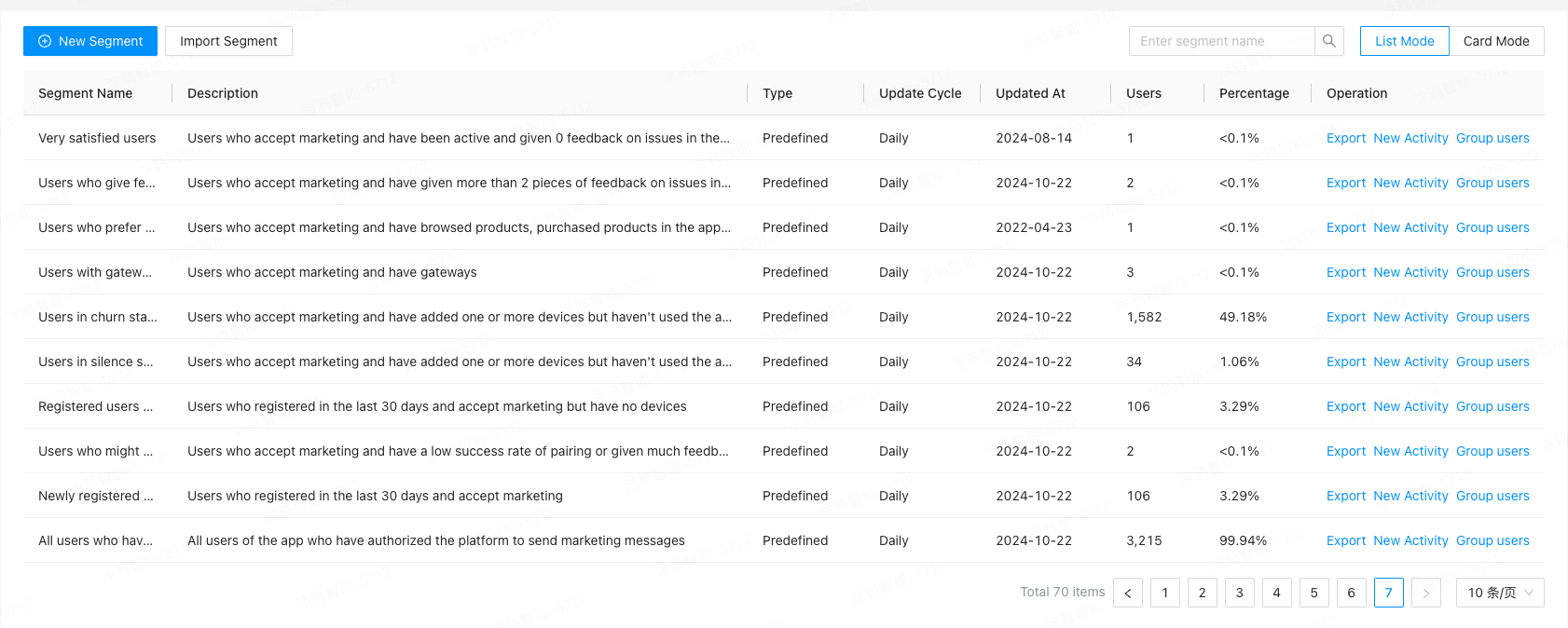
Introduction to predefined segments
| Segment | Description |
|---|---|
| All users who have accepted marketing | All users of the app who have authorized the platform to send marketing messages. |
| Users who might return the products | Users who accept marketing and have a low success rate of pairing or given much feedback on issues in the last 90 days. |
| Newly registered users in 30 days | Users who registered in the last 30 days and accept marketing. |
| Registered users without devices | Users who registered in the last 30 days and accept marketing but have no devices. |
| Users in silence stage | Users who accept marketing and have added one or more devices but have not used the app for more than 7 days and less than 30 days. |
| Users in churn stage | Users who accept marketing and have added one or more devices but have not used the app for more than 30 days. |
| Users with gateways | Users who accept marketing and have gateways. |
| Users who prefer the in-app mall | Users who accept marketing and have browsed products, added products to the cart or favorites, or purchased products in the app mall in the last 30 days. |
| Users who give feedback on issues quite often | Users who accept marketing and have given more than 2 pieces of feedback on issues in the last 90 days. |
| Very satisfied users | Users who accept marketing and have been active and given 0 feedback on issues in the last 30 days. |
Customize segments based on labels
If the recommended segments do not meet your requirements, you can create custom segments by selecting users based on their labels.
-
In the left navigation bar, click User Management > User Segmentation > New Segment.
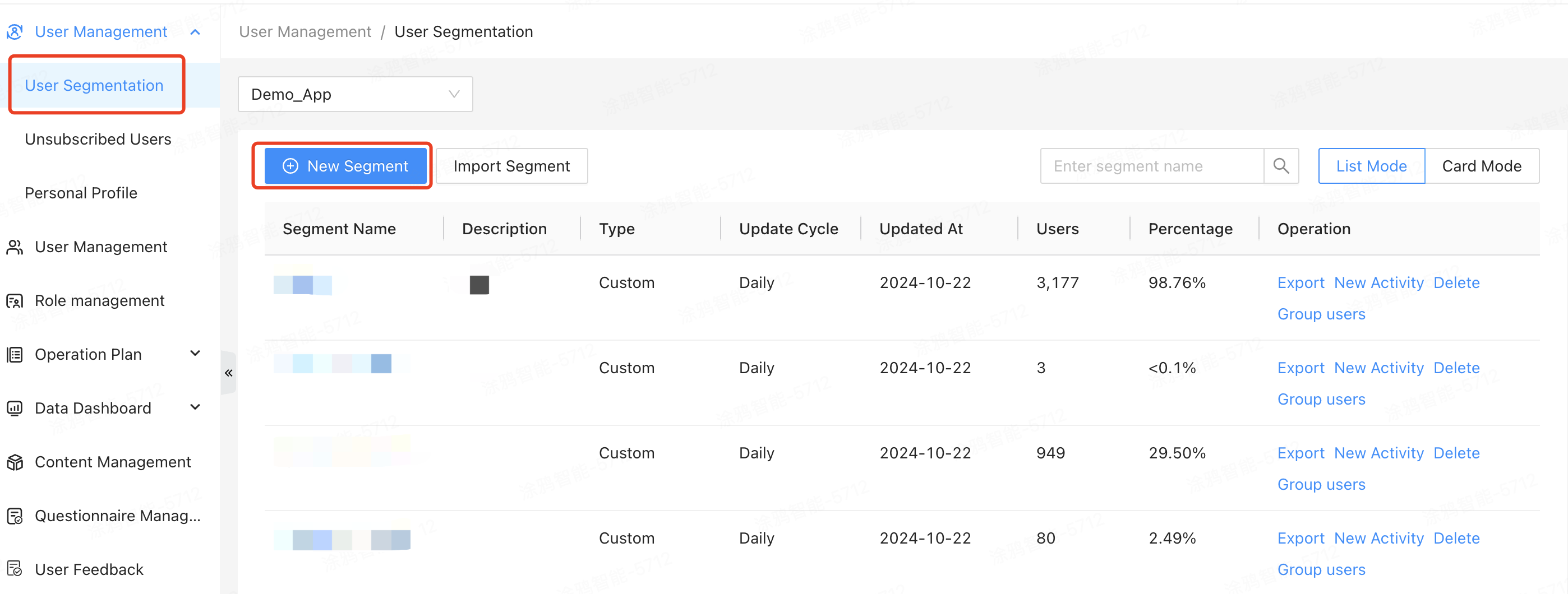
-
Click And and select User Label as the filter. The attribute logic, associated values, and label types will match accordingly. For more information, see Label Filtering.
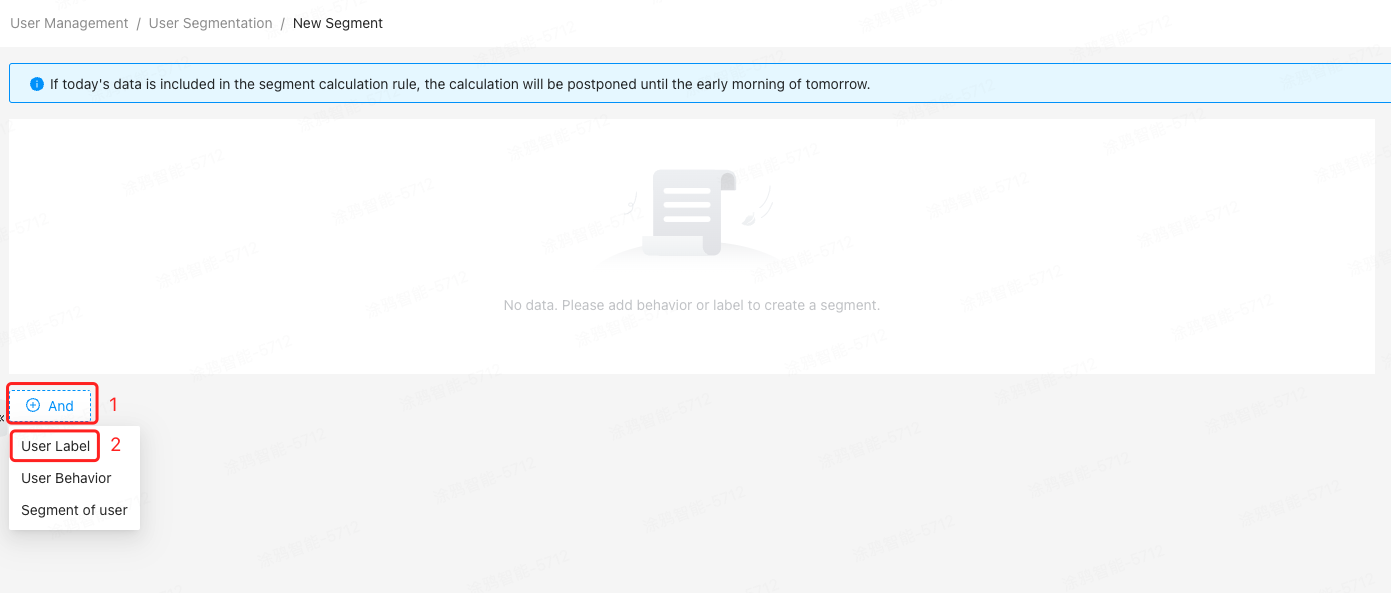
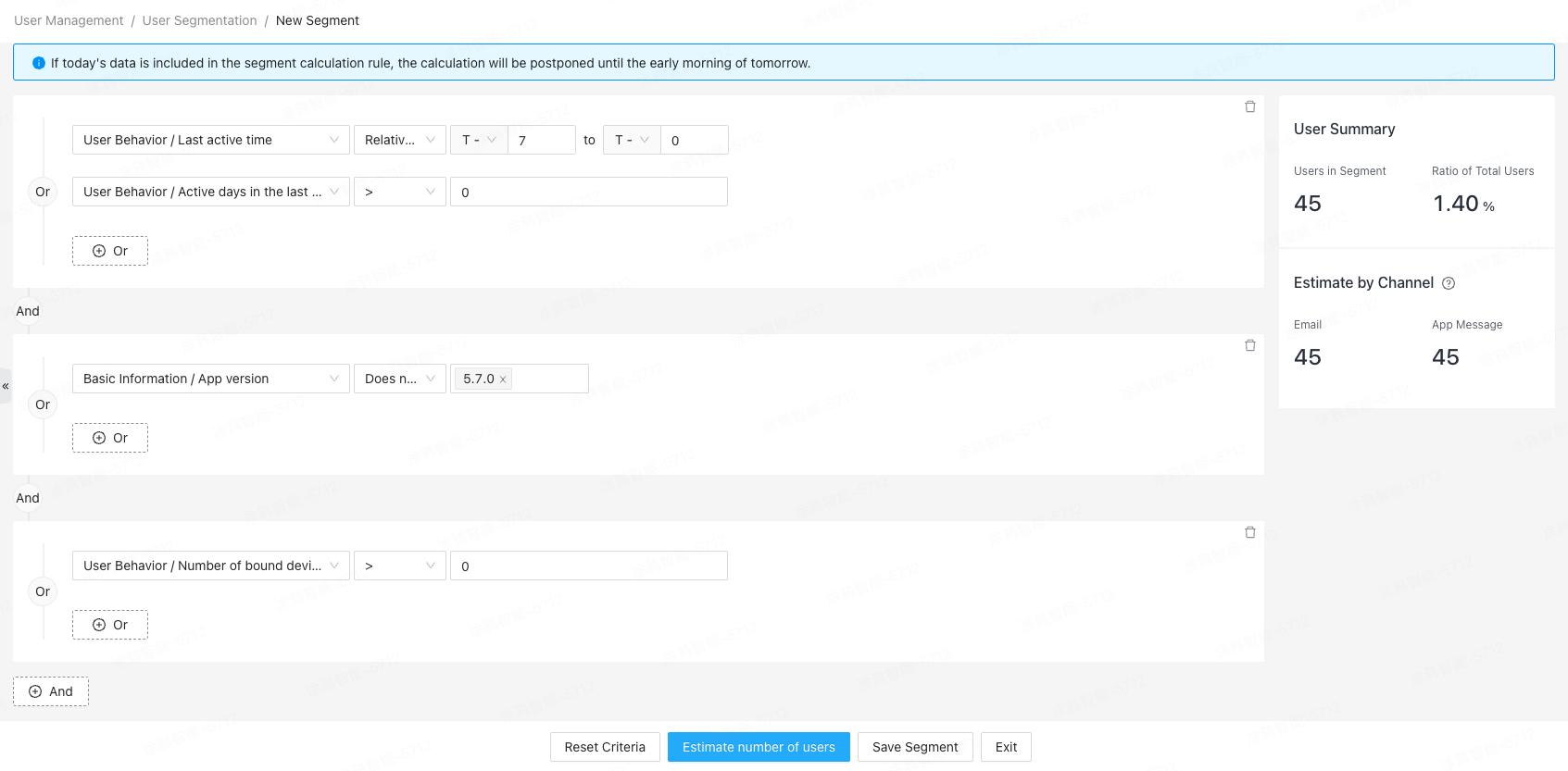
Customize segments based on behaviors
You can also segment users according to their actions on the client side.
-
In the left navigation bar, click User Management > User Segmentation > New Segment.

-
Click And and select User Behavior as the filter. You can filter users based on their behavior data in the last 30 days. For more information, see Behavior Filtering.
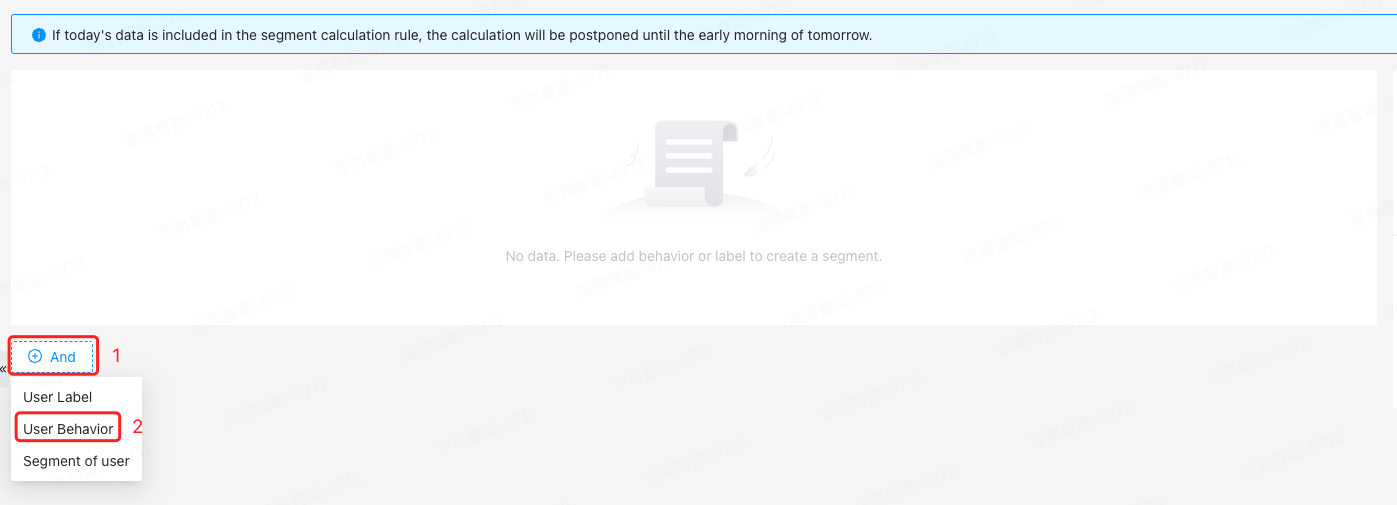

Create nested segments
You can generate new segments by calculating intersections and unions based on existing segments.
-
In the left navigation bar, click User Management > User Segmentation > New Segment.

-
Click And and select Segment of user as the filter. You can create intersections and unions from existing segments. For more information, see User Segment Operations.
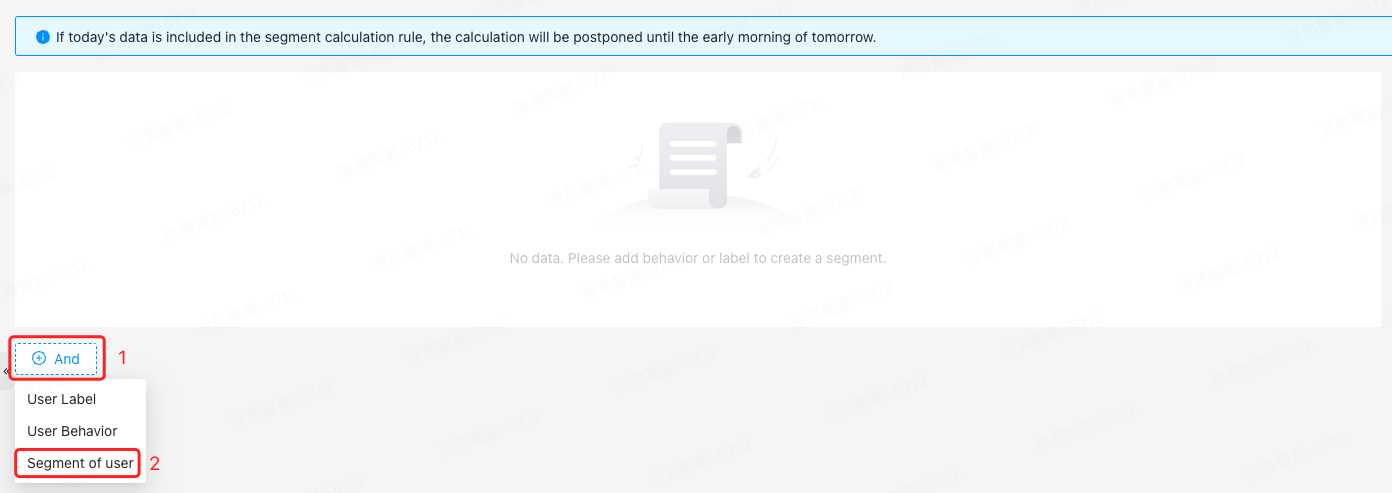

Import segments
You can create user segments by importing any of the following user information: email address, mobile number, or unique ID (UID).
You can also import external email accounts not registered with the app and use them for email marketing.
Mobile numbers and UIDs not registered with the app cannot be imported and will be filtered out during the import process.
The procedure is as follows:
-
Click User Management > User Segmentation > Import Segment.

-
Click Download import template. Fill in user information according to the downloaded import template and import it into Tuya Developer Platform.
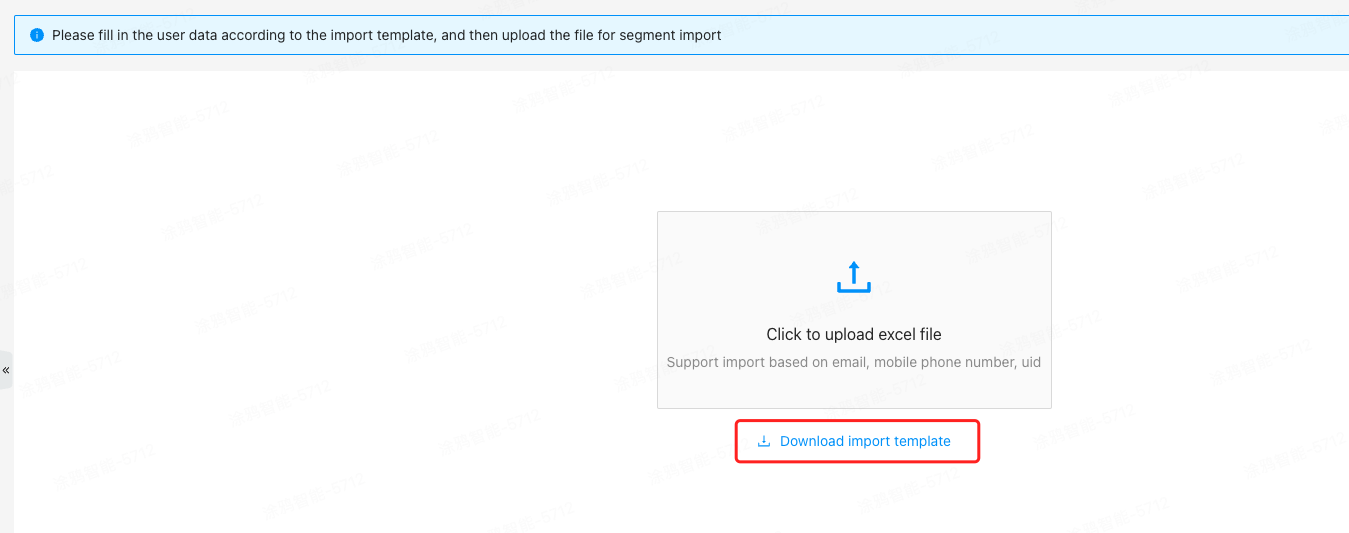
Among them, param1, param2, and param3 are custom parameters. They will be imported along with other user information and used during email marketing. For more information, see Create Email Plans.

-
After the import is complete, the page will display the data that was successfully parsed and any that failed. If parsing fails, you can click Download parsing failure data to see the reasons.
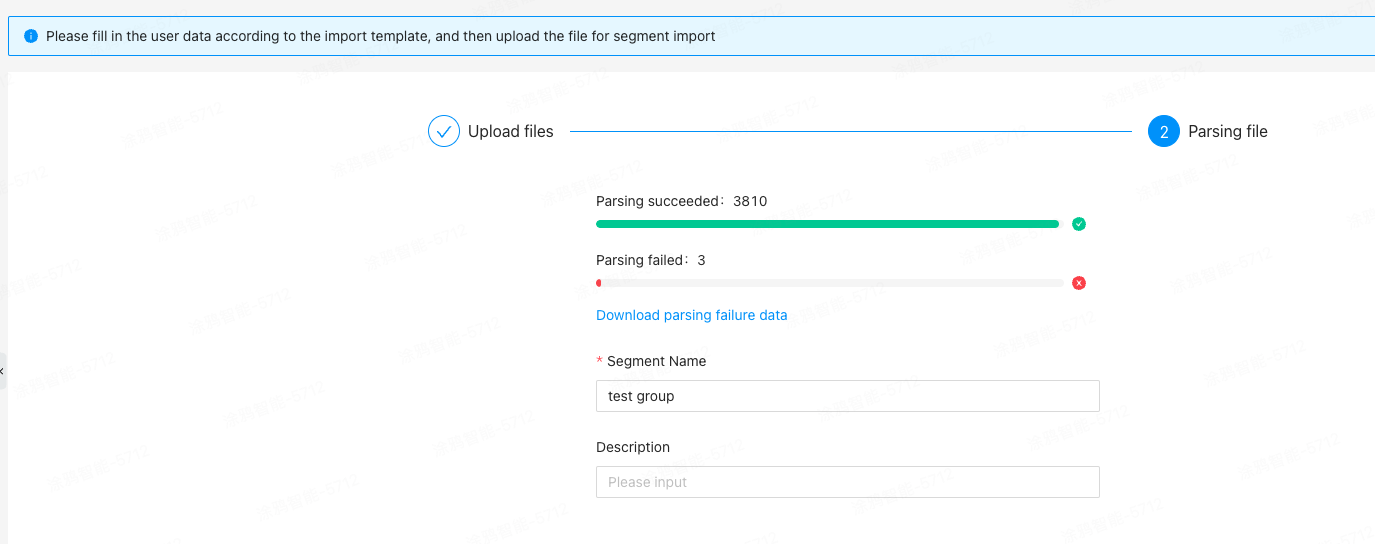
Create user segments
-
After configuring the segment criteria and confirming the estimated segment data, click Save Segment and configure segment information in the dialog box that appears. The segment name can have a maximum of 64 characters, and the description can have a maximum of 128 characters.
The segment name must be unique within each app.
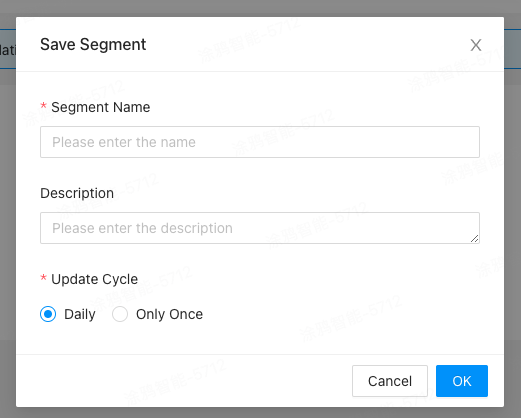
-
After creating a user segment, the segment information does not update automatically. You need to refresh the page or click the search button to see the update time and the number of users in the segment.

Segment update cycle
Segments can be updated daily or as a one-time action.
-
Daily: The system initiates daily data cleansing to update segment data based on conditions.
-
One-time: The information of a segment does not update automatically after being saved. You can click Update or re-edit and save the segment to refresh it.
User segment actions
Export segments
You can export custom and predefined segments to view their user details and labels.
Segments created through import cannot be exported.
The procedure is as follows:
-
Click User Management > User Segmentation to go to the segment list page.
-
Select custom and/or predefined segments and click Export.
-
If you need to export user labels, select the corresponding labels during the export process and click Export.
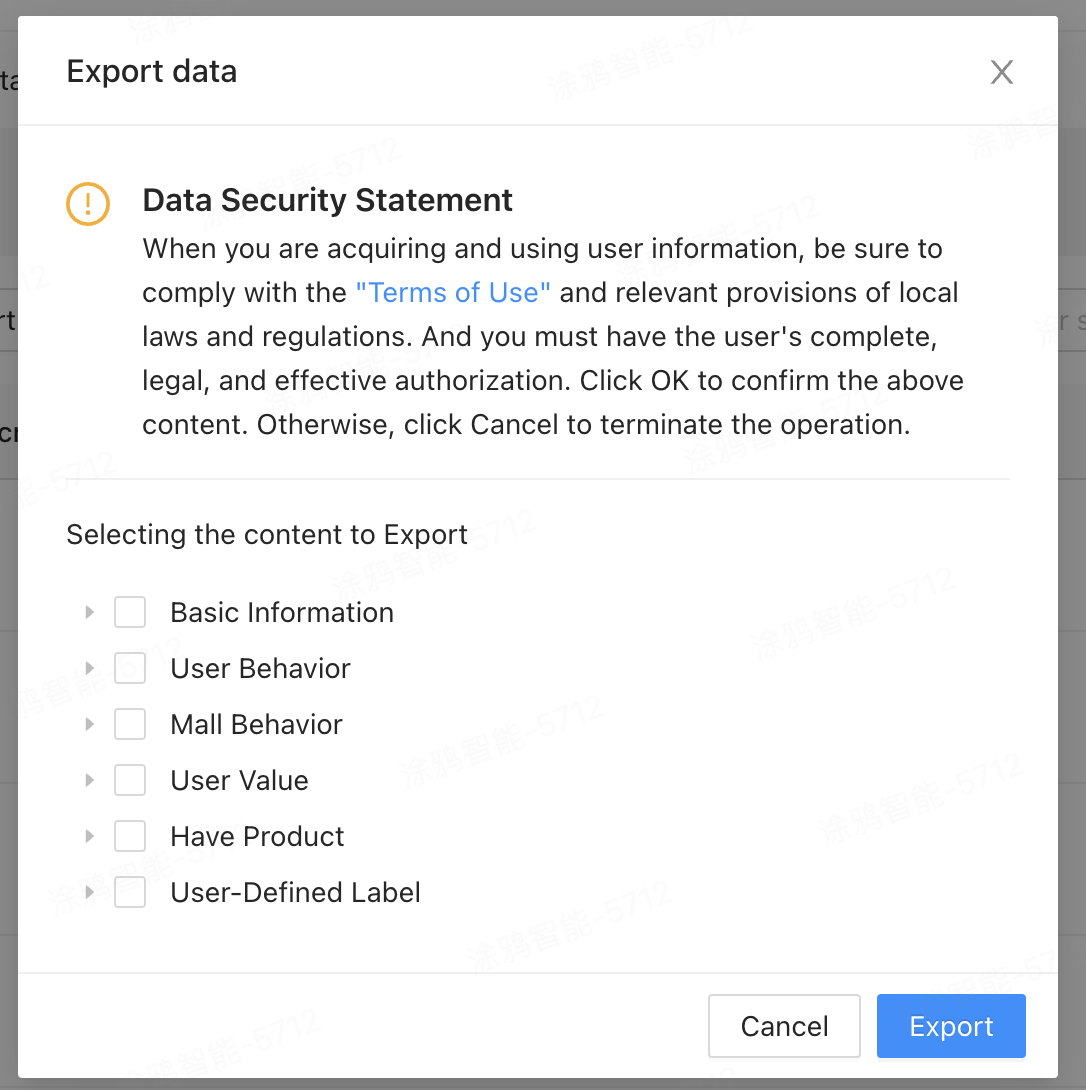
-
Check the download list of the browser and click on the downloaded
.zipfile.If you export a segment immediately after it is created, you may find that no users or only a partial number of users are exported.
This happens because the system automatically initiates data cleansing and processing after a segment is created. This process may take a few minutes, depending on the volume and complexity of the user data. -
Double-click to unzip and view the extracted files.
View user segments
You can click Group users to view the user details and labels of custom and predefined segments.
- You cannot view the users in segments created through import.
- If you click Group users for a segment immediately after it is created, you may find that no users or only a partial number of users are displayed in the user list. This happens because the system automatically initiates data cleansing and processing after a segment is created. This process may take a few minutes, depending on the volume and complexity of the user data.
The procedure is as follows:
-
Select custom and/or predefined segments and click Group users on the right.

-
You will be navigated to the Personal Profile page, with the user segment set to the currently selected segment.
Is this page helpful?
YesFeedbackIs this page helpful?
YesFeedback





